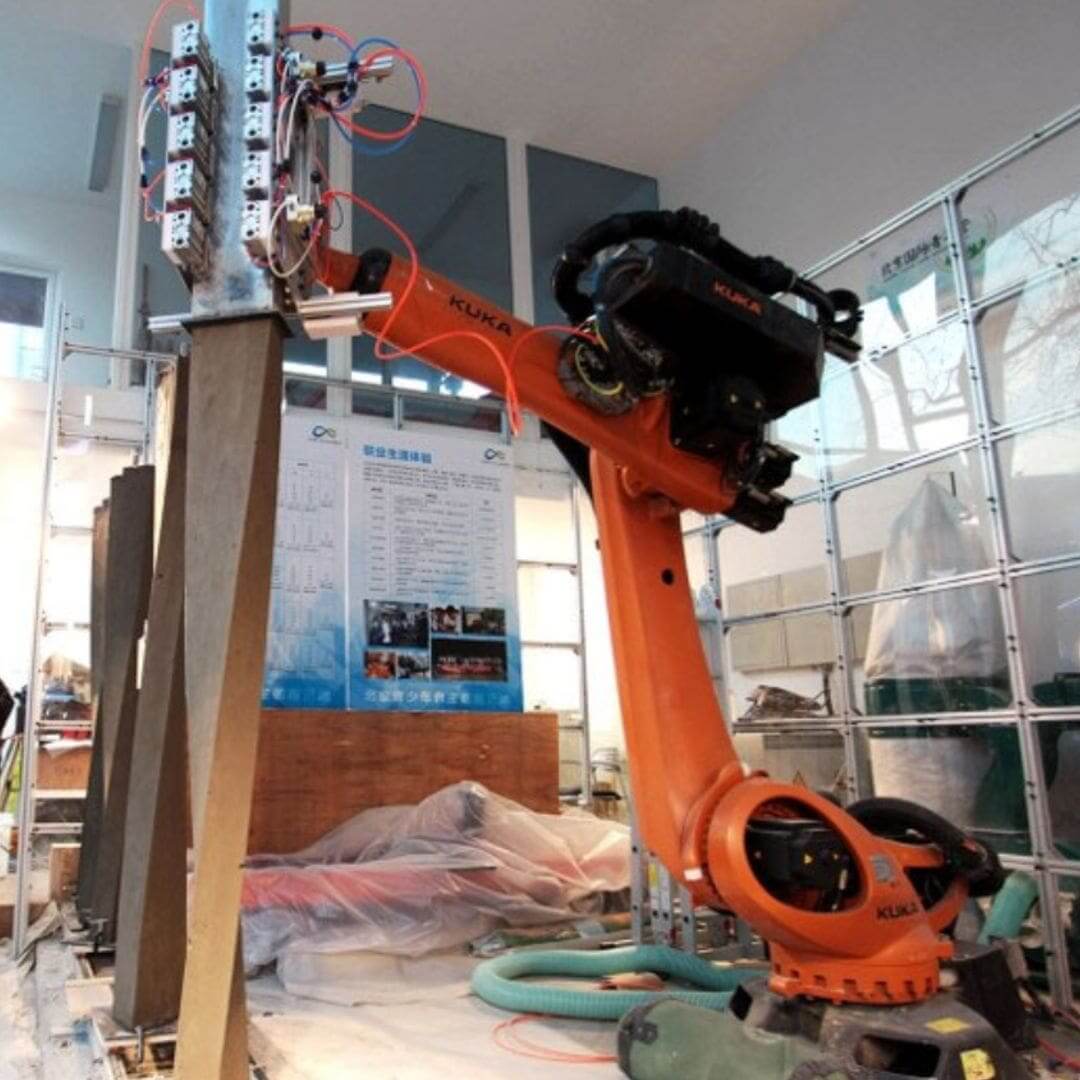On-Site Construction Robots
From Factory to Site – Industrial Robots for On-Site Construction
Dan Luo1, Lei Yu2
1University of Queensland, Brisbane, Australia
2Archi-Solution Workshop (ASW), Beijing, China
The emerging use of robots in manufacture sectors inextricably led to revolution in productivity, collaboration etc. Such development enhances industries’ ability to handle complexity in a effective manner that not only reduce the cost and labor, but also increase the efficiency of material.
On-site construction is known as a labor heavy and material consuming practice. Challenged by the increasing complexity and digitalization of architecture design, combining with social economic issues such as aging labor force and environmental concerns, both academic and industry community has raised increasing attention in applying the robots to construction industries.
 Our exploration of adopting industrial robots for on-site construction started with moving the robotic fabrication process of building component, which is typically conducted in a controlled centralized factory environment, to the construction site. Owning to the unique nature of construction, such adoption of industrial robots has several distinct advantages.
Our exploration of adopting industrial robots for on-site construction started with moving the robotic fabrication process of building component, which is typically conducted in a controlled centralized factory environment, to the construction site. Owning to the unique nature of construction, such adoption of industrial robots has several distinct advantages.
Comparing to the mere adopting of the fabrication process onto the construction sites, perhaps using robots for the building jobs such as on-site assembly and masonry are where the most potentials lies, especially when the aging workforce is becoming a global issue.
 The application of robotic for the physical demanding construction works would direct confront with the issue of aging work force by potentially transform the labor heavy traditional industry of construction into a technology driven and future oriented discipline that is attractive to the younger generation.
The application of robotic for the physical demanding construction works would direct confront with the issue of aging work force by potentially transform the labor heavy traditional industry of construction into a technology driven and future oriented discipline that is attractive to the younger generation.
 Though it is common for people to consider robots are future replacement of labor, the real impacts of application of robots are far more profound. It calls for deliberate collaborative engagement of different disciplines, ranging from design, civil to material science and mechanical design.
Though it is common for people to consider robots are future replacement of labor, the real impacts of application of robots are far more profound. It calls for deliberate collaborative engagement of different disciplines, ranging from design, civil to material science and mechanical design.
The present moment is ripe for connecting robot technology with imagination and materialization, inspiring new fundamental discoveries and opening new scientific frontiers.
































Comments